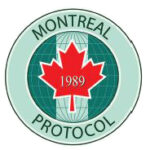EU Regulatory Update
Written on: June 1, 2023 by Cassandra Taylor
Europe, as usual, is on the forefront of chemical regulatory developments. There are a lot of upcoming changes to be aware of if you sell products into the European Union (EU). Even if you do not currently deal with European compliance issues, it is good to be aware of what is happening there. Regulatory initiatives that begin in Europe often eventually make their way to North America. For example, we are starting to see implementation of new labeling requirements in the U.S. and Canada in alignment with the European Commission’s Regulation on Cosmetic Products (EC) No 1223/2009.
This article, exclusive to SPRAY, provides an overview of some key regulatory developments for hazardous chemicals that are currently happening in Europe.
REACH regulation
The transition period for the implementation of Regulation (EU) 2020/878 has passed. All Safety Data Sheets (SDS) in the EU must now conform to the revised Annex II criteria as of Jan. 1, 2023. As discussed in my June 2021 SPRAY article, Annex II of EU’s Regulation on Registration, Evaluation, Authorization & Restriction of Chemicals (REACH) (EC) No 1907/2006 sets out the requirements for the compilation of SDS in the EU. The revision was carried out to incorporate updated EU requirements for nanoform substances, endocrine disruptors and unique formula identifiers (UFI) into appropriate sections of the SDS. Changes to SDS disclosure and chemical information requirements also need to be considered. EU national authorities have launched REACH-EN-FORCE (REF)-11, which is an enforcement project that will involve inspecting SDS and labels to ensure that chemicals sold in the EU market are compliant. Inspections are being carried out throughout 2023 and the results will be reported in 2024.

The core provisions of the REACH regulation have not been updated for the better part of 20 years. The European Commission planned to update REACH in late 2022 in accordance with Europe’s Chemicals Strategy for Sustainability Towards a Toxic-Free Environment. The strategy proposes the development of a horizontal essential use concept to apply across chemical legislation. The overall aim of the concept is to allow systematic decision-making to facilitate the phasing out of the most harmful substances by only allowing them when their use is proven essential for society.
Key topics expected to be addressed in the REACH revision include the essential use concept, registration of polymers and the use of the mixtures assessment factor. However, the update has now been extended to later this year. European Commission officials are facing criticism for delaying the publication of the REACH revision proposal. Members of the European Parliament’s Environment Committee have urged for the draft to be completed by Summer 2023 to avoid further delays. We are keeping an eye out for the release of the proposed amendment, which had not yet been published at the time of writing this article.
EU CLP Revisions
On March 31, the European Commission published Amending Regulation (EC) No 1272/2008 as regards hazard classes and criteria for the classification, labeling and packaging of substances and mixtures (CLP Amendment) in the European Journal. The CLP Amendment will incorporate three new sets of hazard classifications into the regulatory scheme for evaluation and labeling of hazardous chemicals distributed on the EU market.
The new classifications include:
• Endocrine Disruptors (ED) for human health or the environment
• Persistent, Bioaccumulative & Toxic (PBT); very Persistent & very Bioaccumulative (vPvB)
• Persistent, Mobile & Toxic (PMT); very Persistent & very Mobile (vPvM).
The deadline for classifying chemicals according to the new hazard criteria, as well as updating SDS and label information, will depend on when the product is first placed on the market and whether it is a substance or mixture:
• New Substances: May 1, 2025
• New Mixtures: May 1, 2026
• Existing Substances placed on the market before May 2025: Nov. 1, 2026
• Existing Mixtures placed on the market before May 2026: May 1, 2028
The motivation for the new hazard categories came about due to evidence suggesting that substances and mixtures with harmful properties were not fully addressed by the existing CLP building blocks and criteria. The CLP Amendment aims to ensure that products are being labeled with appropriate safety instructions based on their inherent hazards. The hope is that this will help encourage manufacturers, importers and downstream users to replace chemicals that have harmful properties with less hazardous substitutes to the greatest extent possible. As one of the deliverables of the Chemicals Strategy for Sustainability, the CLP Amendment establishes legally binding hazard identification of endocrine disruptors and provides criteria and hazard classifications to fully address environmental toxicity, persistency, mobility and bioaccumulation. The new hazard classifications pave the way for identification of the most harmful substances and will enable further legislative initiatives to restrict their use, especially in consumer products, and reduce their impact on human health and the environment.
Other upcoming changes to EU CLP
The Kigali Amendment incorporated Annex F into the Montreal Protocol, adding various hydrofluorocarbons (HFCs) to the list of controlled substances that countries have promised to phase down in production and consumption. According to the current Globally Harmonized System of Classification & Labeling of Chemicals (GHS) classification criteria, chemicals listed in the Montreal Protocol are categorized as hazardous to the ozone layer. HFCs were incorporated into the Montreal Protocol, not because they are ozone depleting substances (they are, in fact, harmless to the ozone layer), but due to their high global warming potential. Therefore, considering them as hazardous to the ozone layer under GHS criteria does not seem to be accurate or appropriate.

The adoption of the Kigali Amendment into GHS has already been discussed at the United Nations (UN) level and is expected to be implemented by 2024. The European Commission is then expected to begin transposing the GHS criteria into EU legislation. The EU is currently exploring different options for incorporating the Kigali Amendment into CLP and could end up including additional measures to be consistent with other EU regulations that are more ambitious than GHS criteria. For example, the CLP criteria for substances that are hazardous to the ozone layer covers all ozone-depleting substances and not those specifically identified in the Montreal Protocol. We could therefore also see some additional greenhouse gases included in addition to those found in Annex F of the Montreal Protocol and there could be other differences in how HFCs are handled under CLP in contrast to the UN GHS.
Additionally, changes to the harmonized classification for titanium dioxide may be on the horizon. Currently, according to Annex VI to CLP regulation (ATP 18), titanium dioxide is classified as carcinogenic in powder forms containing 1% or more of particles with aerodynamic diameter ≤ 10µm, but this classification was annulled in November 2022 by the Court of Justice of the European Union (CJEU). The General Court held that the requirement to base the classification of a carcinogenic substance on reliable and acceptable studies was not satisfied.
France has appealed the court’s decision to remove the carcinogen classification from titanium dioxide in certain powder forms. According to French regulators, the CJEU exceeded the limits of its judicial review by conducting its own evaluation and interpretation of the scientific data. The appeal process suspends the courts decision, meaning that the harmonized classification and labeling of titanium dioxide will continue to apply until a decision has been made. At the time of writing this article, there were no further updates about the status of the appeal.
Nexreg is committed to keeping SPRAY readers informed of the latest regulatory updates taking place in Europe and globally. We will be sure to provide updates as new changes to EU hazard communication requirements come into effect. SPRAY


